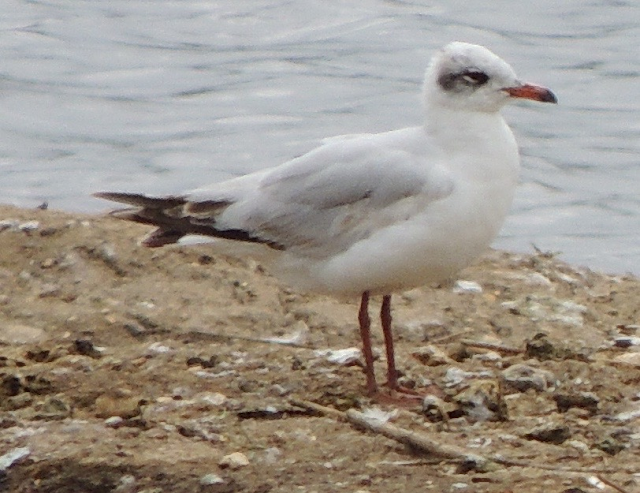These are not posts; these are 30 year weathered posts complete with rusty nail and sunbleached patina. It is to this level kingfisher prep now entails. Chris & Jo install the posts whilst directed by the managerial expertise of John and the Warden (it looked a bit muddy):
Even before the marsh had been left kingfishers were landing on the new posts; but prior to this we had already had a series of cracking photographs of the bird from Roy Vincent:
And Darren Smith:
Unfortunately the glamour was short lived and lenses have spurned these perrenial favourites in preference of these characters - Steve Brimble:
Reportedly today two hobbys gave stunning views hawking dragonflies, whilst an unfortunate great tit was a heavier snack last night. Heron lurking in the reeds by Steve:
Everything seems a bit late this year; the first bee orchid on O res only emerged yesterday and the South Scrub orchid meadow is yet to reach its climax:
And dragonflies only really starting to get going - nice broad bodied chaser male by Andy Marshall:
And female ovipositing:
Wildfowl broods still seem hidden - mute swan emerged on Barmston Drain though - Andy Marshall:Along with more Canada's:
Our stars of last week seemed to have departed now. Certainly they were flying between branches on Monday last when Alan Walkington got a shot of the two chicks:
And its likely Steve was the last to photograph them last Tuesday in a final flourish of posing:
Terns though have only just hatched - three chicks on Saturday. Plenty more to come however as they seem to multiply every time we visit. At the last count there were a confirmed 12 nests - but there are suspicions of a 13th, with 20 birds visible at the same time it makes for quite a spectacle and is great payback for the winter works:
Another good pay off is all the mink trapping that took place last winter; water voles giving a good display in north marsh and as we suspected survived the mink influx - Steve Brimble:
It appears to us that mink are somewhat static in spring and summer during breeding season before dispersing in late summer - so that's when we'll be getting going again with our new traps. Elsewhere a water shrew showed well today and hopefully more to come as we think we know its nest.
Otherwise thinks are relatively static but green sandpiper was beaten south this year by greenshank with two present on Saturday night on South Marsh East with a lone redshank today. We've dropped the levels an inch in the marsh as we're hearing reports of a good movement of birds about so we shall see what we can entice.
To hear more about the mechanics of the water on the reserve along with all the other development updates we will be holding a long overdue Reserve open meeting at 2pm on Sunday the 19th July. Its been many months since the last purely because we had nowhere to hold one; but for those that don't know we aim to hold a twice yearly update on reserve news for anyone whom is interested at the old centre / barn. We also have Stefan's otter study results back too so will be covering the findings of this interesting research too.
Regretfully too we report this week the passing of Ray Kenyon, 86, long time Volunteer Warden since the site opened to the public in 1993:
Ray helped meet and greet on the reserve for 20 years and will be affectionately remembered by many. For anyone wishing to pay their respects amongst his Reserve friends there will be non-religious ceremony in keeping with Ray's views held at Haltemprice Crematorium at 11:30am on Wednesday the 24th of June with donations to Cancer Research. Those whom knew Ray knew he was a staunch believer in reincarnation - so we wish him well wherever he is now and thank him for his help assisting people to enjoy the reserve and its wildlife in this incarnation.

































